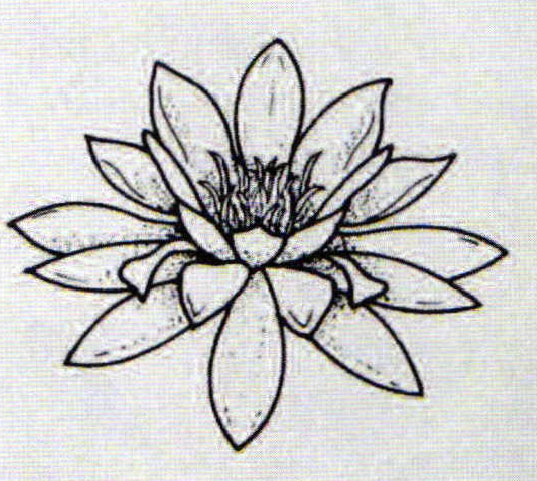Transferring Cartoon
3 Minute Read
In Vol. 4, No. 4, August, 1985 issue of Glass on Metal we published an article titled "Ways to Achieve Line with Enamels." In this article were several tips on achieving 'line' given by Florinda Leighton, an enamel artist from California.
In an issue of the San Diego Enamel Guild newsletter from last year, we noticed one of the tips for achieving line had been reprinted from that early Glass on Metal issue in their "Tips and Tricks" column. It was a procedure that we had not tried, but in re-reading the idea it sounded like it might be a pretty good 'trick.' As we were preparing a lesson plan for a painting enamel workshop this seemed like an ideal way to transfer an outline, cartoon, image, etc. After trying the procedure, to our delight, it works like a charm.
You need carbon paper, not graphite transfer paper. The procedure requires the wax of the carbon paper to make this work. Thompson Enamel now carries a 10 page, 8 ½ x 11 inch tablet of carbon paper for $4.25 plus shipping (See Thompson Ad on page 44).
Line made from carbon paper can be used temporarily or made permanent (in any color or combination of colors).
Establishing cartoon
To establish your image you need a 'cartoon' or line drawing for transfer (Fig. 1). Use tracing paper over photos, magazine images, clip art or just make an original drawing on paper. Tip: When tracing over a photo or magazine image, it may be that you only want to use a part of the image. You can cut a hole or 'window' in paper the size of the enamel substrate you want to transfer the image to, and then place the 'window' over the photo or magazine image and move the opening around until you find a suitable composition. Tape down the paper 'window' then cover with tracing paper and trace the image. (Note: with the flower image used here, I have elected not to trace all the dots and internal lines of the petals.)
Transferring cartoon
a. Disappearing cartoon
Transfer image: tape carbon paper over pre-enameled panel. Tape drawing over carbon paper. Trace over drawing with sharp pencil.
Remove carbon and tracing paper and begin to apply acrylic enamel using the carbon tracing as your guide as to where to place colors. Carbon will disappear when the acrylic enamels are fired.
After the first firing you may do another carbon tracing to apply new lines or to continue to develop the imagery and repeat the process as many times as desired.
b. Permanent line art
Transfer image: tape carbon paper over pre -enameled panel. Tape drawing over carbon paper. Trace over drawing with sharp pencil.
Remove carbon and tracing paper. Using a 100 mesh screen, two inch sifter, sift a light coat of any enamel over entire drawing (If you want a more substantial line, use a 40 mesh screen to apply enamel over the carbon traced drawing, Fig. 6 & 7).
Place piece on firing rack and put in 1450° F kiln for 10 seconds (Fig 8). Remove and cool. (Note: Placing the carbon tracing and enamel under a light bulb is another option for softening the wax.) Dump off excess enamel (Fig. 9) and clean off any fine enamel dust with a brush. Fire on trivet for 1 minute 10 seconds (Fig. 10).
After the cartoon has been made permanent, acrylic, overglaze painting, ceramic pigments, watercolors, enamel crayons, enamel marking pens, and Carefree lusters may be used to decorate the image.
Additional Details
Another great use of this procedure is to continue to add details to the work with carbon tracings and enamel. A tree could be overlaid onto a background of color that had already been fired. If it is a portrait, hair highlights could be added.
Any color of enamel, opaque or transparent can be used with this procedure and it can be done multiple times on the same piece.
You assume all responsibility and risk for the use of the safety resources available on or through this web page. The International Gem Society LLC does not assume any liability for the materials, information and opinions provided on, or available through, this web page. No advice or information provided by this website shall create any warranty. Reliance on such advice, information or the content of this web page is solely at your own risk, including without limitation any safety guidelines, resources or precautions, or any other information related to safety that may be available on or through this web page. The International Gem Society LLC disclaims any liability for injury, death or damages resulting from the use thereof.
The All-In-One Jewelry Making Solution At Your Fingertips
When you join the Ganoksin community, you get the tools you need to take your work to the next level.
Trusted Jewelry Making Information & Techniques
Sign up to receive the latest articles, techniques, and inspirations with our free newsletter.
